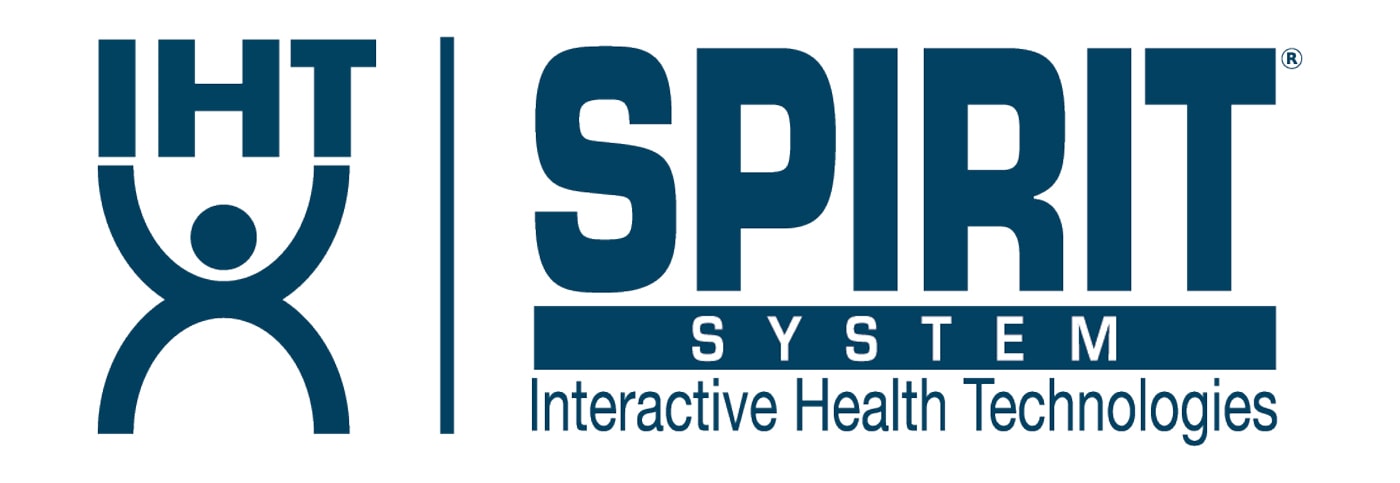Research Correlates Exercise at an Elevated Heart Rate to Benefits that Include Improved Cognitive Performance
IHT designed the Spirit System to focus students on minutes of exercise at an elevated heart rate because academic research shows conclusively that exercise at an elevated heart rate correlates to increased longevity, improved cognitive performance, and self-regulation and classroom functioning among children.
There are different philosophies about the key fitness metrics in evaluating fitness activities such as step counts, time to run a given distance, calories burned, and minutes of elevated heart rate. Our philosophy of focusing on minutes of elevated heart rate aligns with the Center for Disease Control’s 2008 Physical Activity Guidelines for Americans1 standards which recommend:
- “children and adolescents aged 6 to 17 years should have 60 minutes (1 hour) or more of physical activity each day” and
- “most of the 60 or more minutes a day should be either moderate- or vigorous-intensity aerobic physical activity and should include vigorous-intensity physical activity at least 3 days a week.”
In addition to the CDC guidelines on exercise at an elevated heart rate, SHAPE America Physical Education guidelines published in 2015 recommend schools provide students with access to programs during which teachers are encouraged to utilize “instructional strategies and practices that engage students in moderate to vigorous physical activity (MVPA) for at least 50 percent of class time.”2
We believe that people young and old, students or adults, see the biggest health benefit from exercising at an elevated heart rate and that research on other measures such as steps and calories do not show the same reliability and efficacy as heart rate training.
Research Details Health Benefits of Exercise at an Elevated Heart Rate
In 2006, a team of Norwegian researchers directed by Ulrik Wisløff concluded that “a single weekly bout of exercise of high intensity reduced the risk of cardiovascular death, both in men and women compared with those who reported no activity.”3
In 2016, University of Illinois-Urbana researcher Shih-Chun Kao directed a team that defined a positive relationship between muscular and aerobic fitness and cognitive development. “This study indicated that higher levels of aerobic and muscular fitness were associated with greater performance in task conditions that placed greater demand on working memory,” Kao concluded. “Further, these results suggest that aerobic and muscular fitness have similar yet differential associations with working memory and academic achievement.”4
Along with the health and academic benefits, exercise at an elevated heart rate also delivers behavioral benefits. Research published by April Bowling and team in 2017 concluded that, “Aerobic cybercycling PE shows promise for improving self-regulation and classroom functioning among children with complex behavioral health disorders.”5
Students Motivated to Learn Long-Term Lessons Exercising With PE Heart Rate Monitors
Teachers who have used the Spirit System, particularly the IHT ZONE wrist heart rate monitor, report that students have become more motivated to participate fully and meet daily goals.
“Even with our kids already performing at such high levels, I’ve had kids tell me, and it’s been visibly noticeable, that just by even having the monitor on, they take it up another notch in their training,” said Justin Kinney, a PE teacher at Ridge View High School in Holstein, Iowa.
“The kids having this technology so young is very exciting,” said Lindsay Yost, Health and PE Teacher at Fort Lupton Middle School (Colo.). “The kids are understanding. They want to work much harder .”
Teachers see students more engaged with the lesson planning process and found they can use the heart rate monitors to help get students focused as soon as they get to their PE class.
“They were anxious to get them and wanted to get start using them as soon as they got into class, so I was able to use that to help with my classroom management,” said David Kober, PE teacher at Dr. Katie Harper Wright Elementary School in East St. Louis, Ill.
To help students get in tune with their bodies, develop healthy habits, and understand what exercising at an elevated heart rate feels like, we created the ZONE, a wrist-based heart rate monitor that can easily show students of all ages information they can use to improve their exercise performance. The Spirit System simplifies heart rate training to two zones of elevated heart rate exercise, yellow and red. Teachers using the Spirit System set daily class goals that focus on encouraging students to put forth enough effort to reach those zones and stay there for as long as they can.
The Physiological Benefits of Exercise at an Elevated Heart Rate
From a physiological standpoint, exercising at an elevated heart rate allows blood to more efficiently deliver much-needed nutrients and oxygen to muscles. The heart becomes stronger as it works harder, improving its health over time and lowering the risk of cardiac disease.
“Your heart rate tells you how your blood is flowing, tells you if you’re having to work hard,” Kober said. “All of that tells you what kind of shape your body is in. That’s why I like the heart rate monitors.”
Jackie Clark, a PE teacher at River Rock Intermediate School (Wisc.), added the Spirit System for her students in 2017-18 to help her elementary-age students further understand the importance exercising at an elevated heart rate plays in their fitness.
“Teaching heart rate has always been difficult with elementary students,” Clark said. “Without having on a heart rate monitor they don’t really know exactly how long they were in their target heart rate zone. Now they are able to monitor their heart rate throughout the entire class period with the heart rate display accessible to them any time.”
Increased Cardiovascular Fitness Links to Improved Academic Readiness
 Studies detail how improved fitness helps fuel academic and cognitive development, as researched by Learning Readiness PE developers Paul Zientarski and Phil Lawler. By improving their fitness, we are helping deliver students who are primed for academic success. At Oskaloosa (Iowa) Middle School, teachers have introduced a 20-minute morning run designed to prepare sixth-grade students for an intensive morning of 90-minute long math and literacy classes.
Studies detail how improved fitness helps fuel academic and cognitive development, as researched by Learning Readiness PE developers Paul Zientarski and Phil Lawler. By improving their fitness, we are helping deliver students who are primed for academic success. At Oskaloosa (Iowa) Middle School, teachers have introduced a 20-minute morning run designed to prepare sixth-grade students for an intensive morning of 90-minute long math and literacy classes.
“We wanted to give them a huge jolt of oxygenated blood flowing through their systems before they go down there,” said Oskaloosa PE teacher Betsy Luck, who implemented the program that resembles the Daily Mile. “Several years back, there was a big dip in the assessment scores for our incoming sixth graders. We’ve seen the scores start to come back a little bit so this has been a really positive thing.”
For additional reading, citations and links for academic research are available here:
1CDC Youth Physical Activity Guidelines Toolkit. Link
2SHAPE America Physical Education Program Checklist. Link
3A single weekly bout of exercise may reduce cardiovascular mortality: how little pain for cardiac gain? ‘The HUNT study, Norway.’ Ulrik Wisløff, Tom I.L. Nilsen, Wenche B. Drøyvold, Siv Mørkved, Stig A. Slørdahl, Lars J. Vatten. European Journal of Preventive Cardiology. Vol 13, Issue 5, pp. 798 – 804. Him First published date: August-28-2016. Link
4Muscular and Aerobic Fitness, Working Memory, and Academic Achievement in Children. Kao, Shih-Chun & Westfall, Daniel & C. Parks, Andrew & Pontifex, Matthew & Hillman, Charles. (2016). Medicine & Science in Sports & Exercise. 1.10.1249. Link
5Cybercycling Effects on Classroom Behavior in Children With Behavioral Health Disorders: An RCT.Bowling, April & Slavet, James & Miller, Daniel & Haneuse, Sebastien & Beardslee, William & Davison, Kirsten. (2017). Cybercycling Effects on Classroom Behavior in Children With Behavioral Health Disorders: An RCT. Pediatrics, January 2017. Link
Questions about IHT’s MVPA philosophy or anything related to your Spirit System use? Please don’t hesitate to call us at (512) 522-9354 and we will help you through any issue. You can also find guides, troubleshooting tips and more at the Spirit dashboard, located here.
Seeking IHT Spirit System information?





